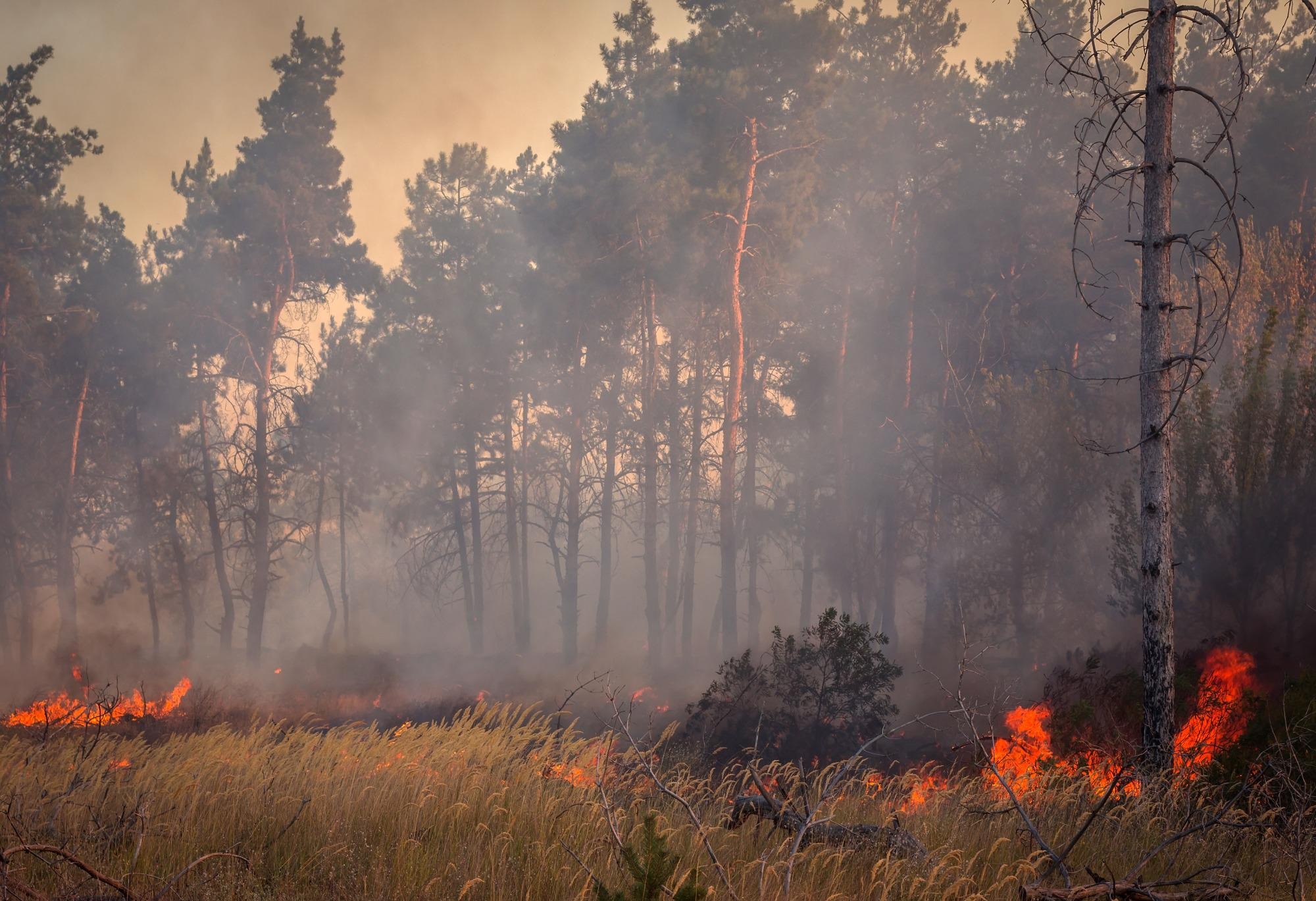A new study performed by US researchers determines that fires happening in the United States and Canadian boreal forests between now and 2050 could liberate nearly 3% of the leftover global carbon budget until bigger investments are made to restrict fire size in these carbon-rich forests.

Image Credit: Shutterstock.com/Lumppini
The study has been reported recently in the peer-reviewed journal Science Advances.
The first-ever study was headed by Dr. Carly Phillips, a fellow with the Western States Climate Team at the Union of Concerned Scientists (UCS), and co-authored by a group of scientists from the Woodwell Climate Research Center, Harvard University, Tufts University, the University of California, and Hamilton College.
The new scientific report recorded by the Intergovernmental Panel on Climate Change (IPCC) clearly demonstrates that countries have a rapidly narrowing window to curb heat-trapping emissions.
To fulfill the aim of the Paris Agreement’s principal of restricting warming to 1.5 °C to prevent a few of the worst effects of climate change, nations need to considerably decrease heat-trapping emissions and attain net-zero carbon emissions by 2050.
Wildfires in boreal forests can be especially harmful in terms of the amount of emissions they release into the atmosphere since they store about two-thirds of the world’s forest carbon, most of which is contained in the soil and has accumulated over hundreds or even thousands of years.
Dr. Carly Phillips, Fellow, Western States Climate Team, Union of Concerned Scientists
Phillips added, “If not properly contained, heat-trapping emissions from wildfires in boreal forests could dramatically increase, jeopardizing nations’ ability to limit warming in line with the Paris Agreement.”
The study discovered that by midcentury, the burned area in the Alaskan and Canadian boreal forests has been projected to increase by as much as 169% and 150%, respectively. This liberates nearly 12 gigatons of net carbon emissions — comparable to the annual emissions of 2.6 billion cars — which constitutes almost 3% of the leftover global carbon budget.
Such estimates tend to be conservative, as the study did not evaluate the ability of boreal forest wildfires to expedite permafrost thaw and other ecosystem processes that could additionally increase net emissions of carbon.
Governments rightly prioritize rapid suppression of wildfires that occur near heavily populated areas and crucial infrastructure, but allow other areas that hold large amounts of carbon to burn–a practice hazardous to the health and safety of communities in Alaska, Canada, and beyond.
Dr. Peter Frumhoff, Study Co-Author and Research Scientist, Center for the Environment, Harvard University
Frumhoff added, “Expanding fire management to keep wildfires near historical levels across boreal North America would provide multiple benefits and leave us far better positioned to meet the goals of the Paris Agreement.”
In spite of contributing an oversized share of carbon emissions, the US and Canadian boreal forests have unevenly small amounts of financial support for fire suppression measures.
Alaska, for instance, accounts for approximately 20% of burned land area and half of the US fire emissions per year, yet only receives approximately 4%, on average, of federal fire management funding.
The study discovered that the average cost of preventing the emission of 1 ton of carbon dioxide was around $12. It is a cost relative to or below that of other efforts to reduce climate change. In Alaska, that would imply examining an average of $696 million annually over the next decade to retain the state’s wildfire emissions at the historical levels.
Reducing boreal forest fires to near-historical levels and keeping carbon in the ground will require additional investments.
Dr, Brendan Rogers, Study Co-Author and Associate Scientist, Woodwell Climate Research Center
Rogers continued, “These funds are comparatively low and pale in comparison to the costs countries will face to cope with the growing health consequences exacerbated by worsening air quality and the more frequent and intense climate impacts that are expected if emissions continue to rise unabated.”
“They can also ensure wildlife, tourism, jobs, and many other facets of our society can persevere in a warming world,” added Rogers.
Journal Reference:
Phillips, C. A., et al. (2022) Escalating carbon emissions from North American boreal forest wildfires and the climate mitigation potential of fire management. Science Advances. doi.org/10.1126/sciadv.abl7161.